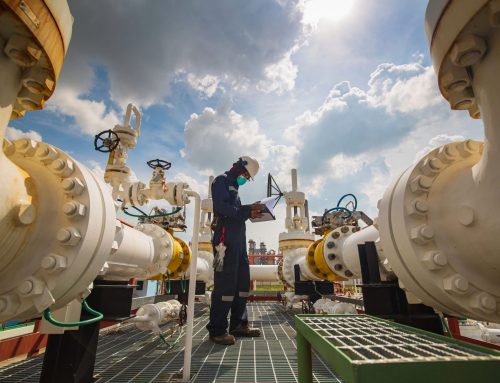Oil and natural gas resources are in high demand for the fuel and energy sectors — and this demand is only increasing over time, with significant changes and developments as renewable energy quickly becomes a core focus worldwide.
In the gas and oil industry, products must perform and be robust and reliable enough to function optimally — even a short amount of downtime can be costly. Parts in this field are also exposed to extreme temperatures, shock, pressure and ingress, meaning they must endure under the harshest conditions…
As a result, many products require strong technical and logistics support capabilities, and today’s electrical infrastructures must combine safe and reliable power supply with state-of-the-art information management systems.
So, what kinds of modern electrical solutions are being used, and how are they designed to handle the pressures and demands of the gas and oil industry?
Signal, alarms and surveillance
Organisations in the gas and oil industry face a unique set of safety and security challenges.
The flammable nature of hydrocarbons and the high operating temperatures of on-site equipment, for example, mean the risk of fires and explosions is ever-present.
Thermal cameras can detect whether equipment functions normally and operating temperatures are within safe limits. If equipment runs hot or fire or explosion risks are detected, automated alerts are sent to security teams in real-time to support a fast, effective response that maximises safety and minimises the risk of disruption and damage.
Oil and gas companies also operate dispersed, standalone work sites in remote locations, so highly effective, explosion-proof CCTV is needed to minimise the risk of vandalism, unauthorised intrusions and other security breaches…
Made of durable materials like fibreglass, polyester and stainless steel, the casing of explosion-proof cameras stops combustible gases and dust particles from entering it. They are mounted by brackets capable of holding up to five times the camera’s weight and benefit from a closed-loop positioning system that is set to return the same camera angle without delay to capture all footage.
Designed to work in extreme environments without interruption, other electrical devices — such as strobes, emergency lighting, fire alarms and public address (PA) systems — can also trigger a process shutdown and send broadcasted alerts and messages.
Motor control and electrical distribution
The oil and gas industry relies on drilling rig equipment to extract oil and natural gas from reservoirs.
Drill rig equipment often uses electric motors as their power source, and these motors must withstand vibration, extreme temperatures, consistent impacts, corrosive environments and other harsh conditions.
A motor starter is an electrical device that starts and stops a motor safely, providing low voltage and overcurrent protection. It comprises two main components that work together to control and protect the motor: an electrical contractor, which switches the power supply on and off by making or breaking the contact terminals, and an overload protection circuit, which protects the motor from potential harm.
Using high-power electronics in motor controllers can pose surface-temperature problems. To combat this, electronic devices must be made explosion-proof and flameproof by enclosing the motor’s internal parts so that air cannot circulate. An enclosed fan-cooled motor is then attached externally to the motor casing to keep its temperatures down.
Electronic instrumentation
In the field, the presence of flammable and combustible gases in production and storage areas can be lethal.
Oil and gas instrumentation provides monitoring and control, crucial for ensuring compliance with safety and environmental regulations. The three main components of industrial instrumentation are sensors, transducers, and transmitters…
Sensors provide continuous measurements to detect and monitor gas and gas emissions, whilst transducers convert temperature, pressure, flow or level variations into an electric signal picked up by a transmitter. Transmitters then serve as an interface between sensors and measurement instrumentation, such as level sensors, flow meters and pressure sensors.
This equipment is responsible for sending a digital signal to the central control system and, when integrated into automation systems, helps manufacturers increase productivity and product consistency by delivering data regarding process efficiency and product quality.
Working with EC Electronics
Control, consistency and product reliability are paramount when manufacturing equipment for the oil and gas industry.
At EC Electronics, we only manufacture products to the highest quality levels, including IPC-A-610 and IPC/WHMA-A-620 standards of workmanship.
In explosive atmospheres and high-risk or high-pressure environments such as oil or gas sites, it is also essential that equipment and systems are intrinsically safe. Our Quality Management System (QMS) is certified to EN ISO/IEC 80079-34:2018 in line with IECEx and ATEX Directive 2014/34/EU, ensuring our products meet the requirements for products certified for use in potentially explosive atmospheres.
Our priority is always to provide our customers with reliable products that consistently perform, even in the most demanding conditions.
From cable and PCB assemblies to electronics box builds, we deliver various electronics manufacturing services solutions to the oil, gas and water sectors. To discover how we can help with your next project, contact us at +44 (0)1256 461894 or sales@ecelectronics.com.









